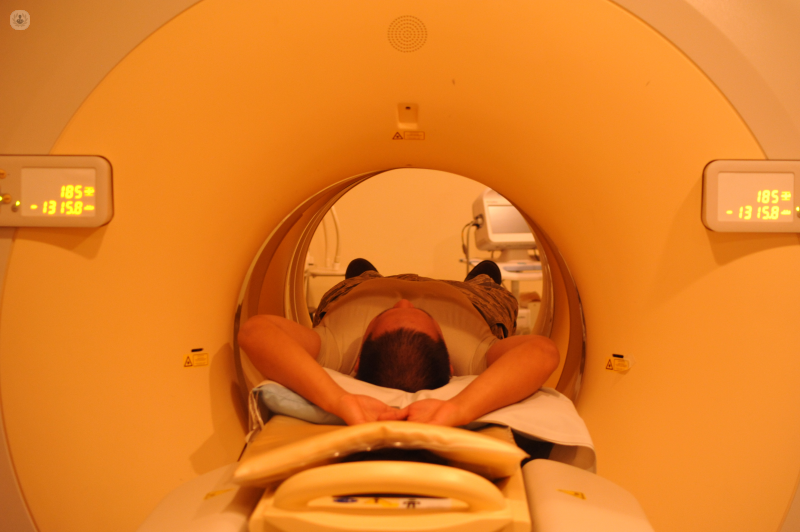


What is a coronary CT?
A coronary CT scan or coronary CT angiogram (CCTA) is an imaging test used to examine the condition of the arteries and other blood vessels coming in and out of the heart.
CT stands for computerised tomography. This scans utilise X-ray images taken from multiple angles to produce a complete cross-section of the body part that needs examining – in this case, the heart and its adjoining blood vessels. These detailed images can be reformatted into 3D images on a computer, allowing the doctor to examine the structures inside the body.
What does a coronary CT angiogram involve?
Before the scan, your doctor may make you take beta blockers to slow your heart rate in order to get clearer images from the scan.
The CT technician will usually give you numbing medication to make the procedure more comfortable. Then, contrast dye will be delivered via an IV line. This will make the heart and its arteries more visible in the images.
Electrodes are placed on the chest to monitor heart rate. You then lie on a long table that slides into the CT machine. You may be asked to keep your arms raised above your head and/or to hold your breath for several seconds while the images are taken in order to take the clearest possible images.
The actual scan is over very quickly, generally taking around 15 minutes, give or take, but taking into account the preparation time, including injecting the dye, the whole procedure can take over an hour.
Why is a coronary CT done?
A CCTA can be used to test for a number of conditions, but it is primarily used to diagnose coronary artery disease by checking for blocked or narrowed arteries in the heart. It can also detect:
- Calcium build-up in the coronary arteries
- Problems with the aorta
- Problems with heart function, including heart valves
- Pericardial disease
Preparation for a coronary CT scan
It is advisable to wear comfortable, loose-fitting clothing to your coronary CT angiogram. You will have to remove any metal objects from your person, including jewellery, piercings, dentures, hearing aids, and bras with metal underwire, as metal can affect the images.
If contrast dye is going to be used (as it often is), you may be asked not to eat or drink anything a few hours before the scan.
You should inform your doctor of any medication you are taking, any long-term illnesses you have, any allergies you have, and if there is a chance you might be pregnant.
What to expect during a coronary CT scan
The intravenous contrast dye may give a warm sensation for a minute or two after being injected, possibly along with a metallic taste in the mouth.
The CAT scan itself is usually very straightforward, but those of a nervous disposition, patients suffering from claustrophobia, or those with chronic pain may find it difficult to stay still in the CT machine. In these cases, the doctor and technician may administer medication to help the patient relax.
The patient is usually alone in the room while the scan is performed, except for in special circumstances.
What do abnormal results mean?
You are able to resume your daily activities after the scan is complete, and the results are usually ready very quickly. Your doctor will go over the results with you.
If the images from the coronary CT scan indicates that you have a heart condition, your doctor will discuss treatment options and any steps or lifestyle changes you can take to improve your heart health.
